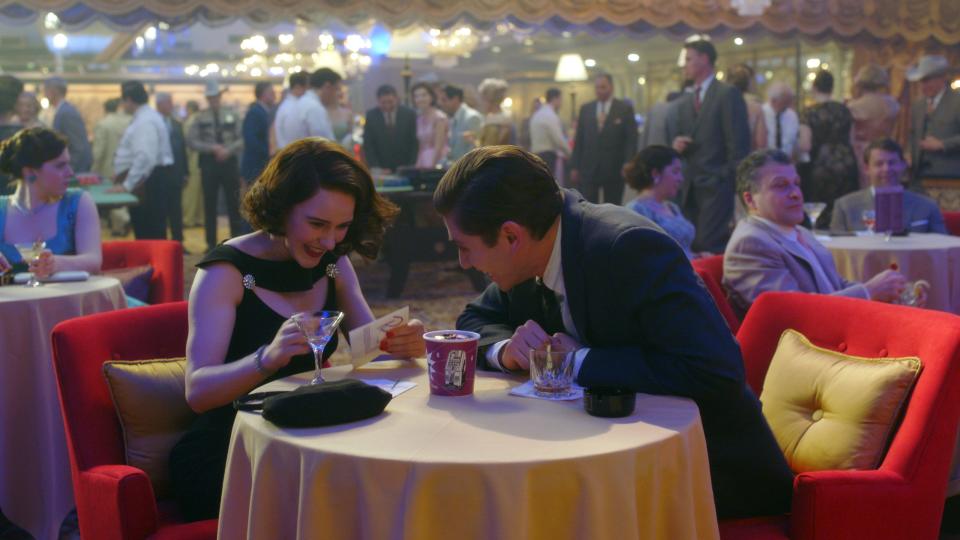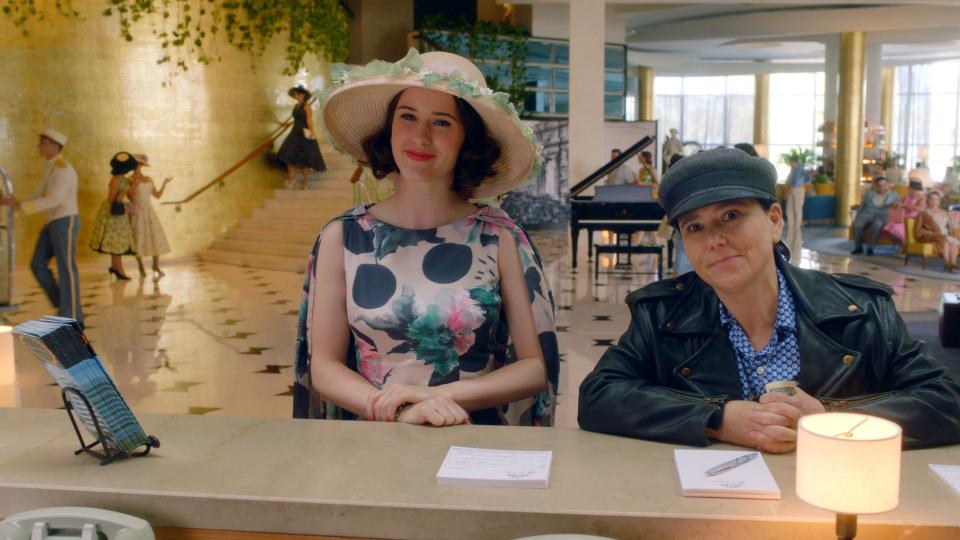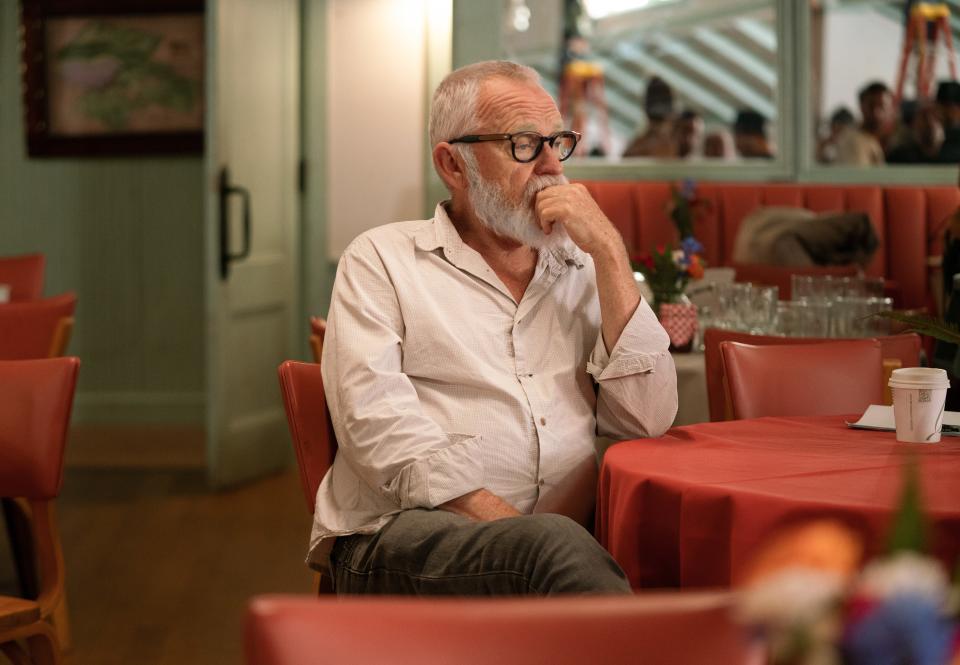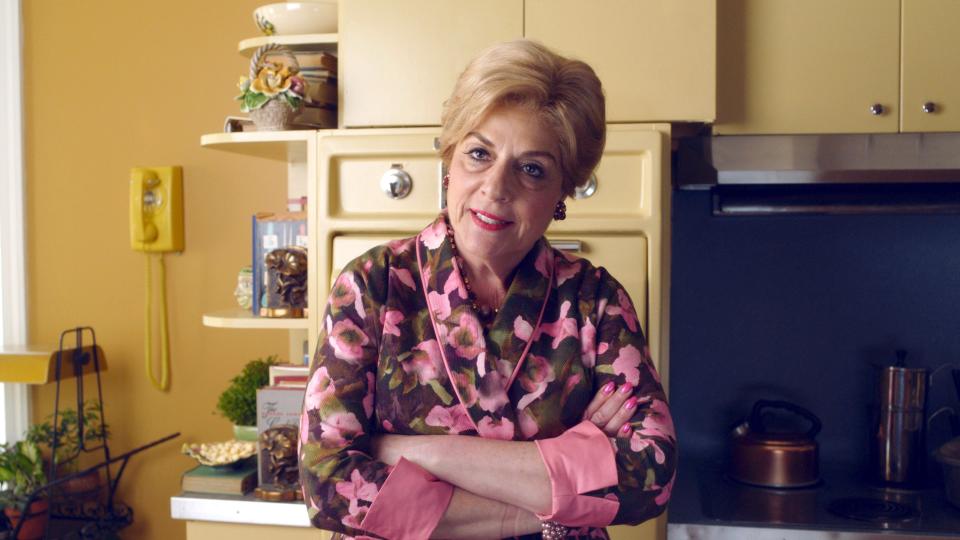In The Marvelous Mrs. Maisel Season Three, Midge Hits Miami, Las Vegas, and More
For its first two seasons, Amazon's hit series The Marvelous Mrs. Maisel followed the journey of Midge Maisel (Rachel Brosnahan) from her cloistered life as a posh Upper West Side housewife to her new one as a rising stand-up comic in the dingy underground clubs of Greenwich Village in the late 1950s—with pit stops in Paris and the Catskills. The use of lush color throughout the series, the extraordinary level of visual detail, and its light, playful sensibility has garnered production designer Bill Groom two Emmy nominations for helping realize a world that has become a favorite for audiences and critics alike.
In season three, streaming on Amazon beginning December 6, Midge Maisel joins heartthrob crooner Shy Baldwin (Leroy McClain) on a national tour that takes them from Las Vegas to Miami and beyond. For Groom and his team, constructing these richly layered worlds was an involved process done at breakneck speed. "We get the scripts and respond pretty quickly," Groom tells Architectural Digest of the schedule. "Each episode has about two weeks of prep and and a two-week shooting period."

To create the Las Vegas of 1960, Groom pored over product catalogues, personal photos, and even spent time researching at the Library of Congress. "I'd rather work from a catalog of the period than a book about the period, because it's just a little more complete and less edited," Groom says. A small section of the Las Vegas Strip was built at Floyd Bennett Field in Brooklyn, with the background filled out by the visual effects team. For the hotel interiors, a catering hall in Queens was converted into a casino floor and ballroom with vintage slot machines sourced from a collector. According to Groom, the catering hall had previously been a movie theater, "so it's got some wonderful details." To evoke the glamour of old Vegas (and Midge's new life), Groom used rich gold wallpaper, plush red curtains, and deep purple upholstery.

Miami Beach was also featured in the season—specifically the famed Fontainebleau hotel, which finished an extensive billion-dollar renovation project in 2008 and where the crew was actually able to film on location. "We built a few pieces to hide this sort of modern technology around the front desk and all that," Groom explains, but the renovation actually restored much of the hotel's original architectural elements (like the "staircase to nowhere" and the bow-tie floor) enabling the crew to leave the lobby, pool, and porte-cochère largely untouched.

Meanwhile, back in New York City, Midge's ex-husband, Joel Maisel (Michael Zegen), has set about opening his own nightclub, finding a small space in Chinatown to lease out. "That's one of my favorite sets," Groom notes. "I based it on a location that I had seen years ago [in Queens] that's been closed down for decades." Groom designed the set (curved stage, red-painted wood ornamentation, an antique jukebox) from his memory, a process he's been practicing for years. "Sometimes I'm sitting in a restaurant having dinner with friends, but instead of talking, my eyes are darting around the room making little mental notes of details that maybe years later I'll remember," he admits.

One particular challenge this season was creating the kitchen for the new home of Moishe and Shirley Maisel (Kevin Pollak and Caroline Aaron). The filming location was a largely period-appropriate house in Forest Hills, Queens, except that its kitchen was contemporary. Groom and his team were struggling to find metal cabinets and appliances from the era when, by chance, a home under renovation "was pulling out a perfectly period kitchen and told somebody who worked on the show about it." The crew managed to acquire the entire kitchen and install it on set—Groom calls it their "lucky break."
Originally Appeared on Architectural Digest

